Super Mario Odyssey Review – Is it worth playing now?
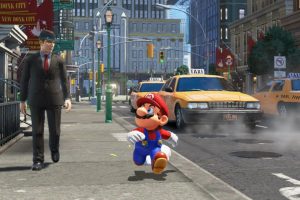
Super Mario Odyssey launched on the Nintendo Switch in 2017, marking the plumber’s first 3D outing on Nintendo’s new platform.
Mario’s previous 3D mainline game, Super Mario 3D World, was an excellent if somewhat paint-by-numbers outing for the mascot, and didn’t have the same innovative impact as some of his other 3D console games, such as Mario 64 or Mario Galaxy.
Odyssey promised a return to the open-ended exploration based gameplay of Mario 64 and Mario Sunshine, swapping the more linear courses in Galaxy and 3D world with larger, expansive areas that could be explored at the player’s leisure, with the player able to gather the game’s collectibles (Power Moons instead of Power Stars this time around) in any order they like.
I was excited to play this, as I’d always preferred Mario’s more exploration-based outings, so did it live up to my expectations? And it is worth playing now, years after the initial release?
(Check out our other reviews here)
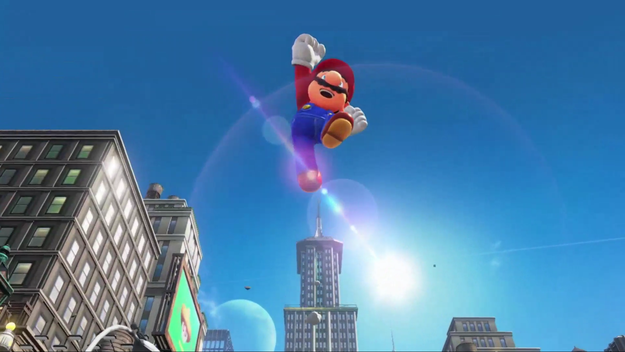
Good
Graphics: Mario and his surrounding environment have never looked better. With Mario himself, it feels like Nintendo have finally nailed the look they’d been going for with previous Mario models, with the plumber excuding an almost edible quality. I want to just pick him up and gobble him down. There is more variety in terms of level themes than in any previous Mario game (more in this later) with every level sporting its own visual flair. The most successful are those that stay more aligned the traditonal cartoonish Mario universe aesthetic – the Luncheon Kingdom and Seaside Kingdom in particular- with the vibrant colours and Pixar-esque animated characters bursting out of the screen. The technical details like textures, shadowing and lighting are all excellent throughout the experience, are amongst the best on Switch.
Big Worlds: Odyssey marks a switch back from the more linear courses of the Galaxy Games and 3D World to the expansive, open design of games like Mario 64 and Sunshine. This is a welcome move, with the exploration element added back into the mix to complement the tight 3D platforming. The worlds do vary in size, with the larger proving to be more memorable and exciting. New Donk City is a sprawling urban zone with nooks and crannies in between buildings all very satisfying to uncover, and the Sand Kingdom is a vast desert filled with fun little landmarks. Exploration is actively encouraged in Odyssey, and the collectible Moons are littered throughout each world. The majority of which are discoverable from the get-go – i.e. ‘selecting’ a Moon at the beginning of a level isn’t required, unlike in previous games where doing so would alter the level depending on which Star you were after. The game also doesn’t exit the world upon the discovery of a Moon as per 64 and Sunshine, meaning you can spend as much time as you like within a level gathering Moons and exploring seamlessly. There are hundreds of Moons available in the game too, with another set becoming available in each level after you’ve collected the first set – meaning you’ll be encouraged to comb through every world multiple times to get them all. This is a good thing, as it serves to etch the levels into memory – something I felt the Galaxy games, particulrly Galaxy 2, lost in its design, as once the 2 or 3 stars had been gathered in a level, there was little need to go back to it, thus making it harder to recall.
Cappy Control: Fluid control has always been a staple of the 3D Mario seires, with the mere act of controlling Mario enjoyable in and of itself in most of the series. Odyssey does well in this department, with most of Mario’s usual moves all here. The big addition this time around is Cappy – Mario’s now anthropomorphised cap. Cappy can be thrown at enemies to take control of them, but more significantly adds to Mario’s core moveset by being ‘hoppable’ – Mario can now throw Cappy, dive at him and hop off, servign as a double jump of sorts. More adept players can string two throw-dive-hops together, allowing Mario to reach higher/further away platforms. It can be a bit fiddly at first, but once mastered it becomes second nature – much like Sunshine’s FLUDD. A great addition that i’m sure we’ll see more of in future entries.
Moons within Moons: I mentioned earlier how such is the number of Moons that you’ll have to comb through the worlds multiple times to get them all, and that this was a good thing. This is never more true than when you stumble across a Moon hidden within a specific puzzle designed to get you a different Moon. Think the Princess Slide in Mario 64 – beating the slide normally gives you a Star, but beating it under a certain time gets you an extra, hidden Star! Satisfying! This formula is found all over the place in Odyssey, with hidden Moons bestowed upon you for approaching a puzzle a bit differently, trying a left instead of a more-obvious right, or achieving a better score in a mini-game. It’s a fun added layer.
Comedy Writing: Unless it’s a Paper Mario game, the quality of the writing isn’t somehting I usually notice or worry about in a Mario game. I’m not there for the story, just the abstract platforming and exploring across fantastic worlds. Odyssey however surprises in this department, with some really funny, self-referential writing from the characters. Each world has its own native inhabitants as well as the enemies, and there’s a fair bit of interaction with them as they explain their woes to Mario. Thankfully the writing is often funny and charming, rather than just filler.
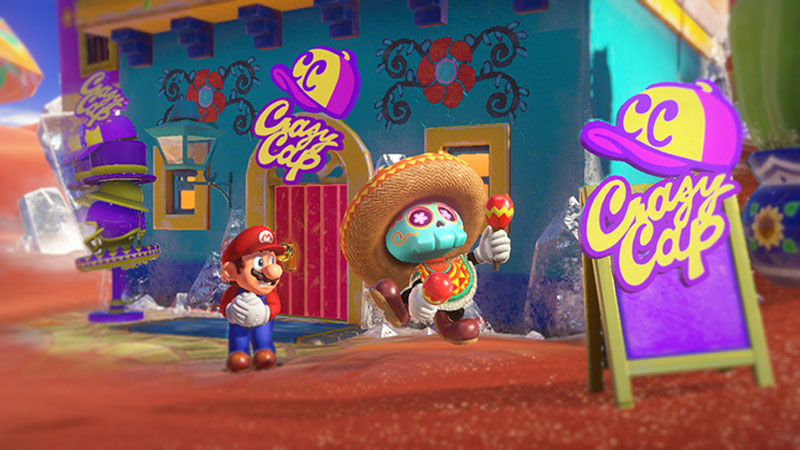
Parrot: With so many Moons hidden on each level, some you might find tricky to locate. Talkatoo is a helpful parrot (or I guess cockatoo?) who provides cryptic hints to a few of them, if consulted. It’s a nice way of recognising some players might not want the additional clues and choose to figure out the Moons without help, whereas others might need the extra assistance.
Outfits: Something Odyssey really deserves credit for is the level of content which in lesser games would certainly have been hidden behind a paywall via microtransactions. In more recent years since Odyssey released, it feels like Nintendo has strayed down this unfortunate path, but back in 2017 Nintendo were set on offering real vlaue to the players. There are what feels like hundreds of outfits available via the in-level shopes in Odyssey, all purchased with in-game currency that you simply collect along the way.
Enemy takeover: When you first start playing, it may seem like a staple of the series is missing: powerups. There aren’t any fire flowers or feathers to be found in Odyssey. But it wont be long before you discover that there are in fact gameplay-changing powerups in the form of enemy takeovers via your new friend Cappy. Hurl him at an enemy, and Mario possesses the enemy and is able to perform special actions native to it – Goombahs can stack atop one-another, Chain Chomps can break through walls, frogs can jump really high, etc. The levels are of cours edesigned around these powers, and the majoriy of them are really fun to control, and the ‘Mario-fied’ verisons of each creature are enjoyable to discover (essentially just the enemy with a moustache and a hat, but still).
Sunshiney secret zones: One of the best things about Maro Sunshine was the bonus secret zones that removed Mario’s FLUDD device and consisted of a linear course designed to test the player’s raw platforming skills. These served as a welcome change of pace form the laid back exploration of the open world and in Odyssey they make a brilliant return, feauring more numerous and varied linear challenges than ever before. There’s often a secret hidden Moon amongst the stage as well, requiring approaching the seemingly linear course from another angle, which feel satisfying when you discover them. Brilliant stuff.
Death coins: Odyssey is clever in that it finally solves a problem 3D Marios have had ever since 64 – the issue of consequences. Losing all your lives used to have real remifications in the 2D Mario games, resulting in lost progress, whereas 3D Mario games they were pretty irrelevant. In Odyssey they’e cracked it, taking a leaf from Sonic’s book – now losing a life means you now lose coins. And coins are of course now a precious commodity – alloing you to buy outfits (some of which are required for certain areas) and indeed Moons themselves. Having something at stake when you die is a welcome change form the ‘oh well’ reprocussions of other 3D Marios.
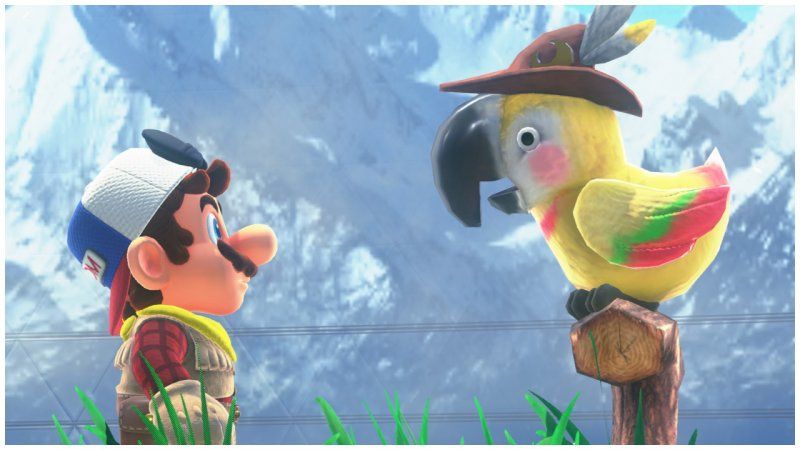
Music: You can always rely on a Mario game delivering an excellent soundtrack, and Odyssey indeed delivers in spades. Every level has it’s own memorable orchestrated tune, suting the environment really well. There are remixes of old retro tunes too, and of course the famous New Donk City playable-musical number, which was reminiscent of a 3D version of Rayman Legends music level. I wish there aren’t more moments like it in the game.
Variety: Travel is very much a key theme of Odyssey – Mario can collect postcards and mementos from each location, and the various outfits serve as souvenirs from him travels. Unlike former adventures, the worlds don’t share a common theme or style, a la space in Galaxy or the tropical island of Sunshine. Every world is unique and separate from one another, in both themeing and artistic style. The realistic NPCs of New Donk City are completely different from the Tostarenans of the Sand Kingdom, who in turn are totally different from the floating hat people of the Cap Kingdom. The variety keeps things interesting, and the lack fo repetition between levels ensures you’re always curious to see what’s happening.
No Fever Dream experience: Because there’s only a relatively small amount of worlds n Odyssey compared to the smaller, more bitesize levels of the Galaxy games in particular, you’ll find yourself returning back to them mmultiple times to scoop up more Moons as they become available. Because of this, you’ll avoid the ‘fever dream effect’ – which is what I call the sense I got from, in particular, Galaxy 2. Because there were so many levels in G2, most of which you had little reason to return to, whilst they were excellently designed I found it tricky to recall my experiences in them once I was done with the game. The more exploration based 3D Marios, particularly 64 and Odyssey, have levels that linger long in the memory due to the number of times you are made to comb through them, and I found myself thinking about them whilst not playing.
Postgame: I’ll be brief with this one to avoid spoilers, but at one point you think you’re done with the game – only for it to be revealed you’re not even half way through. It’s rare that games pull this trick off, but Odyssey does it really well.
2D platforming: Some of the best sections of the game are the 2D sidescrolling segments. There are pipes littered throughout each world (as there should be) and most of which send Mario into a wall, much like the gimick in Zelda: A Link Between Worlds. The wall then becomes a mini 2D Mario Bros level, eithr hiding a Moon or two, or serving to take you to an otherwise inaccessible part of the level. Complete with coins, enemies and 8-bittification of the world’s music, they’re an excellent addition.
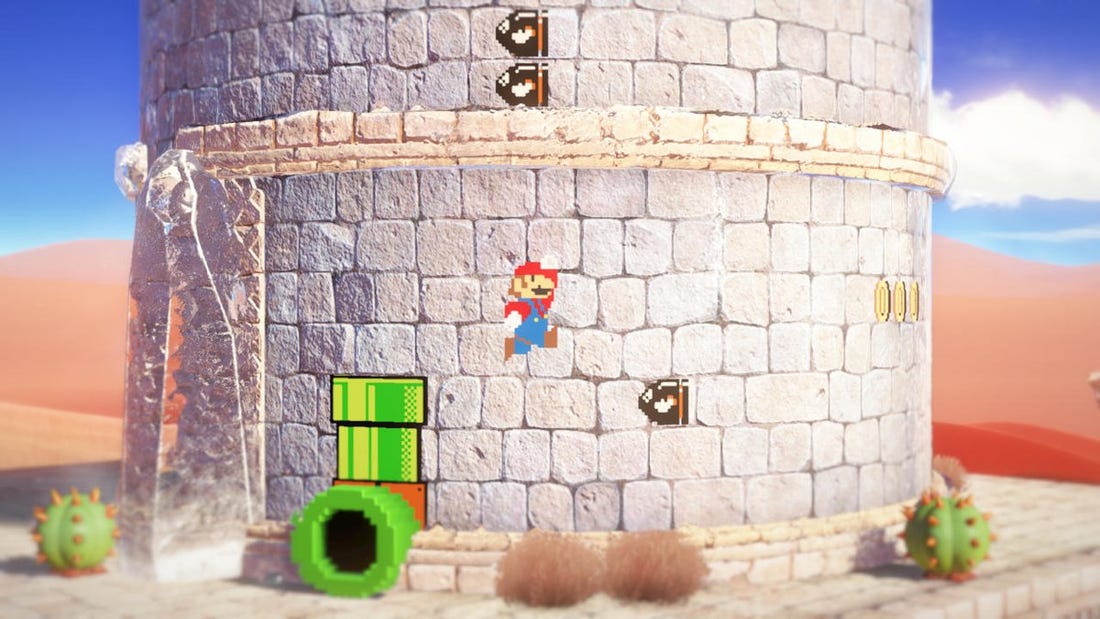
Challenge: The challenge in Odyssey scales impressively. There are 999 Moons in the game, and in Mario-tradition only a fraction of these are required to see the game’s ending. The additional hundreds are there for the completionists and those who want a greater 3D platforming challenge, with the game’s final world presenting a deadly obstacle course that will test even the veterans of the 3D Mario games. Where I’ve found these games to never quite get the difficulty curve right (Galaxy being too easy, Sunshine too spikey), I can say Odyssey is the most successful of the franchise in doing so.
Yoshi: Everyone’s favourite green dinosaur thankfully makes a playable appearance in Odyssey, and its the best 3D rendition of the little guy yet. In Shunshine they didn’t really get him right at all, feeling too light and limited to the annoying fruit meter, and in Galaxy 2 he was much improved but still not perfect. In Odyssey he feels just right, and will surely be a staple of the future games in the series.
Mixed
Controls: There is lots to love about the way Mario moves and feels in Odyssey. The aforementioned addition of Cappy adds some nice technical moves to the roster, and each creature you take over has well-implemented unique abilities for the most part. Rolling and wall jumping have also never been better. There are a coulpe of dawbacks however. Mario’s jumping, particularly the long jump and the backflip, feel nerfed from former games. Galaxy introduced a weaker long jump than 64, and it fees even more hampered in Odyssey. Using the cap to defeat standard, non-take-overable enemies also doesnt feel as good as 64’s Mario punching and kicking, which is something we haven’t seen from him since. And Odyssey, like all of 64’s predecessors, still doesn’t feel as momentum-based as Mario in 64, which is still the best Mario when it comes to control.
World quality: In Odyssey, all Worlds have not been created equal. The Luncheon, Sand and Metro Kingdoms are the best of the bunch, offering huge map with many layers, secrets and inhabitants to discover and explore, with what feels like an endless supply of Moons crammed into each. However, for every sprawling world, there’s a smaller, seemingly unfinished world to complement it. The Ruined Kingdom is the worst offender here, consisting of just three platforms and a boss battle – with the Cloud and Moon Kingdoms not much better. It really feels like these were left unfinished, and included just to pad out the game. A shame. What’s more, the theming of the worlds also feel inconsident in terms of quality. Unavoidable perhaps, when the theme of the game is variety between worlds, but even some fo the staple worlds like the Lake and Snow Kingdoms feel somewhat lackluster in terms of design and visual flavour, which is surprising for a Mario game.
Moon value: With a staggering 999 Moons to collect, it’s inevitable that they would feel diluted in value when compared to the Power Stars or Shines of the previous games, with which 120 seemed to be the magic number. I don’t mind this too much, as it just allows for more secrets and more discovery, however there is some dissonance felt when you struggle through a long, tough challenge only to be rewarded with something of the same value that you found by just running around in a circle earlier on in the same level. 3 Moons are handed out for defeating bosses, which indicates the developers did recognise this, but it feels like they should’ve put a bit more thought into the levels of reward for different challenges.
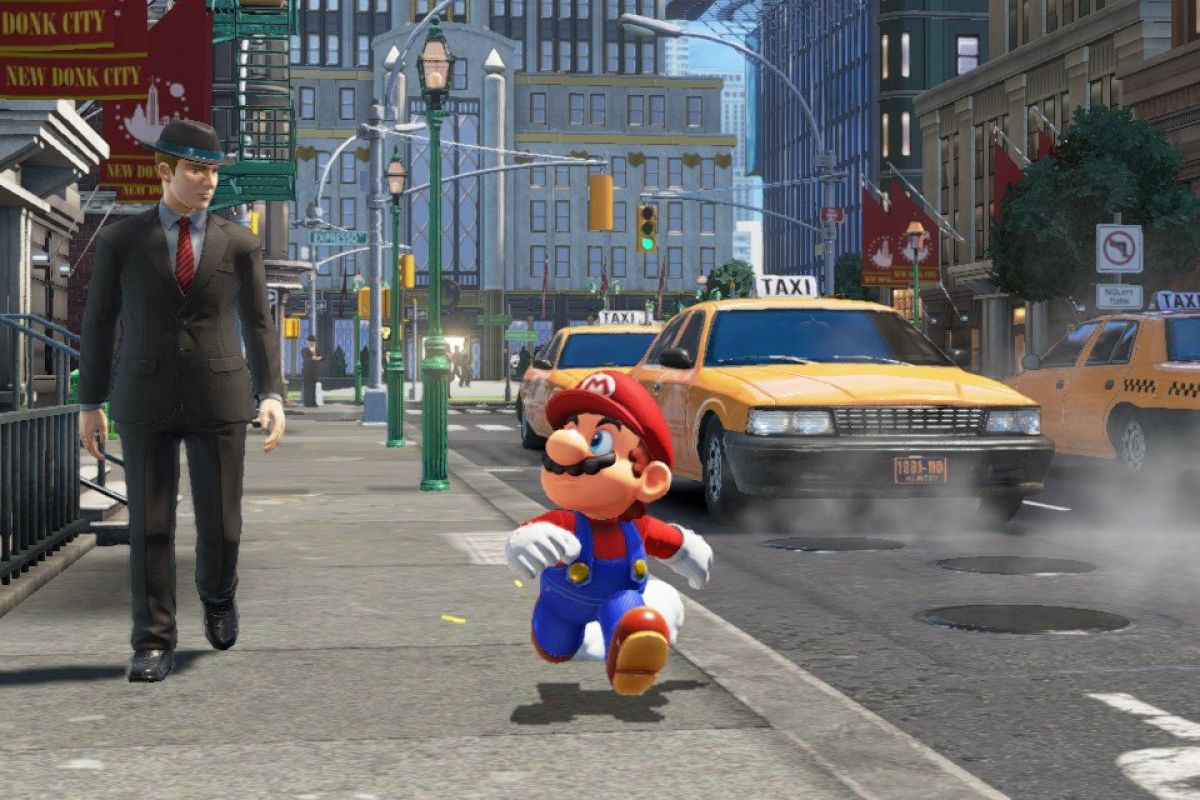
Boss battles: There are several boss challenges in Odyssey, some fo which are great – the level-specific bosses tend to be the better ones, like Mecha Wiggler in New Donk City, or Cookatiel – a giant bird that spews platforms of lava that you have to hop up as the adorable lava-fireball-Mario. There are some duds however. Bowser has a new set of minions – a group of evil rabbits that take the place of the Koopa Kids ,and frankly, they dont hold a candle to the kids in terms of charm or design. They’re quite ugly in fact, and having to fight them multiple times throughout the game grows particularly tedious.
Bad
Non-Marioness: As interesting as the style approach is in Odyssey, and as good as it is to see Nintendo try something different with their flagship franchise, sadly it ultimately results in a failure for the most part. Seeing a realistically designed T-Rex in the Fossil Kingdom, or ‘normal’ looking people in New Donk City next to mario’s cartoony aesthetic just doesn’t work for me. What compounds the issue is that the designers don’t seem to have committed fully to the premise of completely unique and consistent style in each world. The aforementioned hyper-real T-Rex lives in harmony with Chain Chomps and Goombas – distinctly Mario-themed enemies. It would have been better to fully commit to the ‘realistic’ style of the T-Rex by having the whole environment styled in that way. What’s more, some worlds seem to adhere fully to the Mario-universe style, whilst others live in this uncomfortable half-way gap between a realistic/different aesthetic, but also not-quite separated from Marioness. The game is a failed experiment in this regard.
Emptiness: I mentioned how some of the worlds feel unfinished, but I’d say the majority of worlds suffer from a sense of emptiness. This seems a bizarre claim considering how many Moons are hidden within them, but sadly rings true for most of the levels. The Sand Kingdom, as you’d expext, is mostly sandy desert, peppered throughout with set-piece puzzles and characters that hide a Moon or three. The issue is that there often doesn’t seem to be much thought put into where and how these set pieces appear and fit in the world. A random Koopa to race just standing out int he desert waiting for Mario feels rather lazy.
Camera: Somehow the camera in Odyssey is worse than the Camera in The Legend of Zelda: Breath of the Wild. That’s not to say it’s awful, but it does feel limited. One of my favourite features of the Zelda camera, and indeed cameras in prvious open 3D Mario games, was the option to pull the camera right back away from the character, or directly above the character, and get a really nice sense of the vastness of the environment, seeing your tiny self against a sprawling backdrop. The camera is just too close to mario most of the time in Odyssey.
Hub-less: I don’t know why Nintendo appear to have done away with the concept of an explorable hub world. Hub quality has faded as the series has gone on: 64’s Castle > Sunshine’s Plaza > Galaxy’s space station > Galaxy 2’s ship. A hub like the Castle or the Plaza really serves to make the world of the game feel connected in a way that makes sense. In 64, there was a fun kind of logic that each world was in an enchanted painting within the Castle, thus making them all feel linked. in Sunshine you could actually see other levels in the distance, as they were all parts of the island. In Odyssey, we don’t even get an explorable ship, just a Globe map that vaguely links the levels together. Exploring the Castle in 64 was one of the most lauded parts about the game, so it’s a real shame to see this espect diminish in Nintendo’s eyes.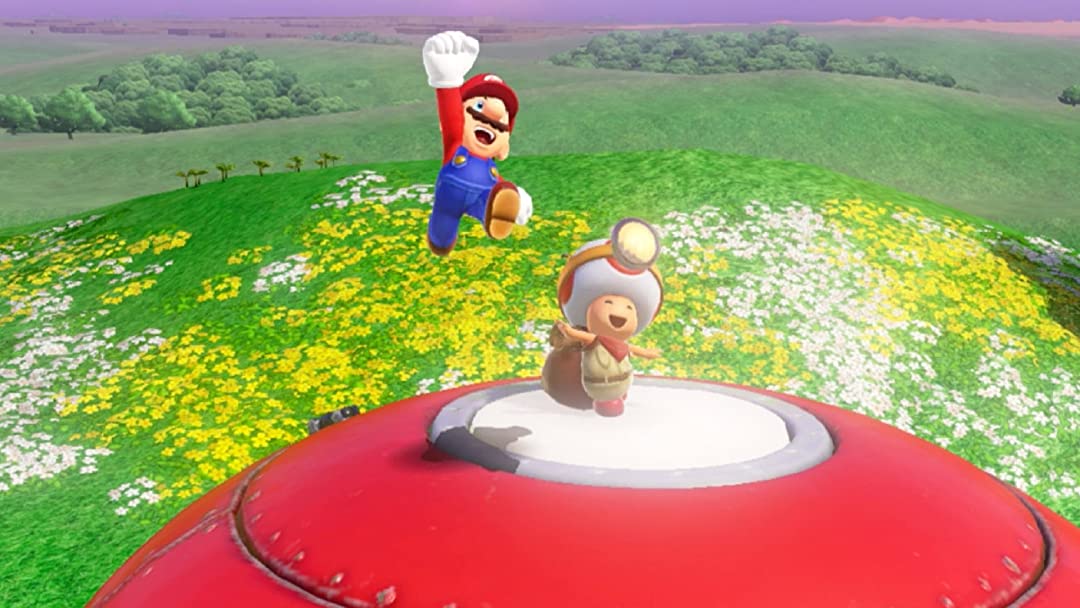
Voice: For some reason mario’s voice sounds a little off this tie around. He seems to be getting more and more high pitched with each tieration. Personal preference, but I suppose I prefer a deeper, gruffer Mario.
Boo Hoo: As a consequence of the style choice, this is the least ‘Mushroom Kingdom’ feeling of any of the Mario games, which is to be expected as Mario is traversing through different worlds. I’ve mentioned the issues this causes above, but I’ll also add that in sacrificing the Mushroom Kingdom style, we lose some of the most charming and iconic staples of the series. Where’s my Haunted Hosue level? No Boo? I know the little Hat Spirit things are techincally ghosts, but they cannot hold a candle to Boo. There also aren’t enough rolling hills with little pill eyes, chocolate mountains or clouds (also with eyes). Thus the whole thing ends up lacking the charm of other Mario games.
Lack of Worlds: There are techincally 17 Worlds in the game. Whilst that may sound a lot, I’d say half of them fall into the small or unfinished category. And whilst the others are large, I was left feeling like there should be more here. Mario 64 had a similar amount of levels if you incldue the Bowser levels and the Cap Switch courses, and considering you get an entire hub castle on top of that, it leaves Odyssey – released over 20 years later – feeling sparse by comparison.
Moon Puzzle Repetition: With 999 Moons, I’ll forgive Nintendo for not making every one of them equally unique and thrilling to discovered. But the repetition of acquisition equirements really does start to grate after the first few hundred, and you’re left feeling that there isn’t anything unique to discover, despite there being hundreds of moons left to colelct. Some tedious patterns that every level in the game has multiple iterations of include: Chase the rabbit to get Moon. Buy Moon from a shop. Go through a painting to find Moon. Race Koopa to win Moon. Throw Cappy on a random pole to win Moon. Follow and collect the music notes to win Moon. Ground pound a rnadom spot to find Moon. Speak to Peach to be given a Moon. These are just a few examples of Moon acuiring methods that are repeated at least once in every level. What’s the point? Why not halve the number of Moons in the game and put mor effort into making them a bit more challenging? It’s the biggest underlying issue with the game, and makes collecting every Moon feel much more of a chore than 120 Stars ever did.
Overall
Super Mario Odyssey has a lot of positives; the techincal quality, the music and the addition of Cappy are all great. Sadly though, this is the least enjoyable of the 3D Mario games, faring even worse than Shunshine in both the fun-factor and charm categories. The attempt to branch Mario out of his usual Mushroom Kingdom vibes is a failed one, as the designers didn’t go far enough with it – the best parts of the game are those that remain dinstinctly Mario Flavoured. After you collect the first couple of hundred Moons, and you find you’ve discovered all the levels (which takes up about a tenth of total play time to beat the game), the whole thing suddenlly begins to feel like more of a chore than an enjoyable experience, which is a deadly sin for a Mario game to commit.